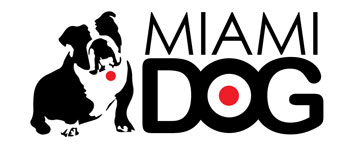
If you’ve seen pups playing you can’t miss the dog play bow: butt in the air, elbows and maybe even the chest on the ground, loose tail, smiling face, maybe a lolling tongue and probably a shimmy from side to side. Everything about this fun pose shouts, “I’m up for fun, let’s play!”
Dogs play bow for a number of reasons:
- Let’s play. Dogs often communicate to other dogs in this way to let them know “everything’s cool, let’s be friends and play together.” They may also play bow when asking us to play! And if the play stops, they might assume another play bow to reignite the festivities.
- Friendly greeting. A play bow is friendly, so some dogs may choose to greet a new dog with a play bow, giving off “it’s OK, I’m a nice guy” vibes. Especially if the new dog seems unsure or even tense a play bow communicates chill vibes and can help diffuse a potentially tense encounter.
Because of its loose and appeasing appearance, play bows may be helpful for dogs who as puppies missed out on learning appropriate communication skills during the critical socialization periods.
- Time out. Since so much of play includes body language that seems aggressive (such as chasing, barking, tumbling) a pause and a play bow can communicate a reset, functioning as a self-imposed timeout.
- Keep calm. Play bows can also be calming signals, so you may see a play bow to keep the peace. In these scenarios the play bow might be much more static compared to the bouncy to and fro of the play bow specifically intent on inciting play.
Dogs aren’t the only animals to engage in this fun posture: Foxes, coyotes, and even wolves are known to use this signal for communicating they’d like to frolic.
Dog play bows are a good thing. Next time you see your dog or other dogs playing, wait for it. And if you see your dog waving his butt in the air like he just don’t care, seize the opportunity for some energized one-on-one playtime!
